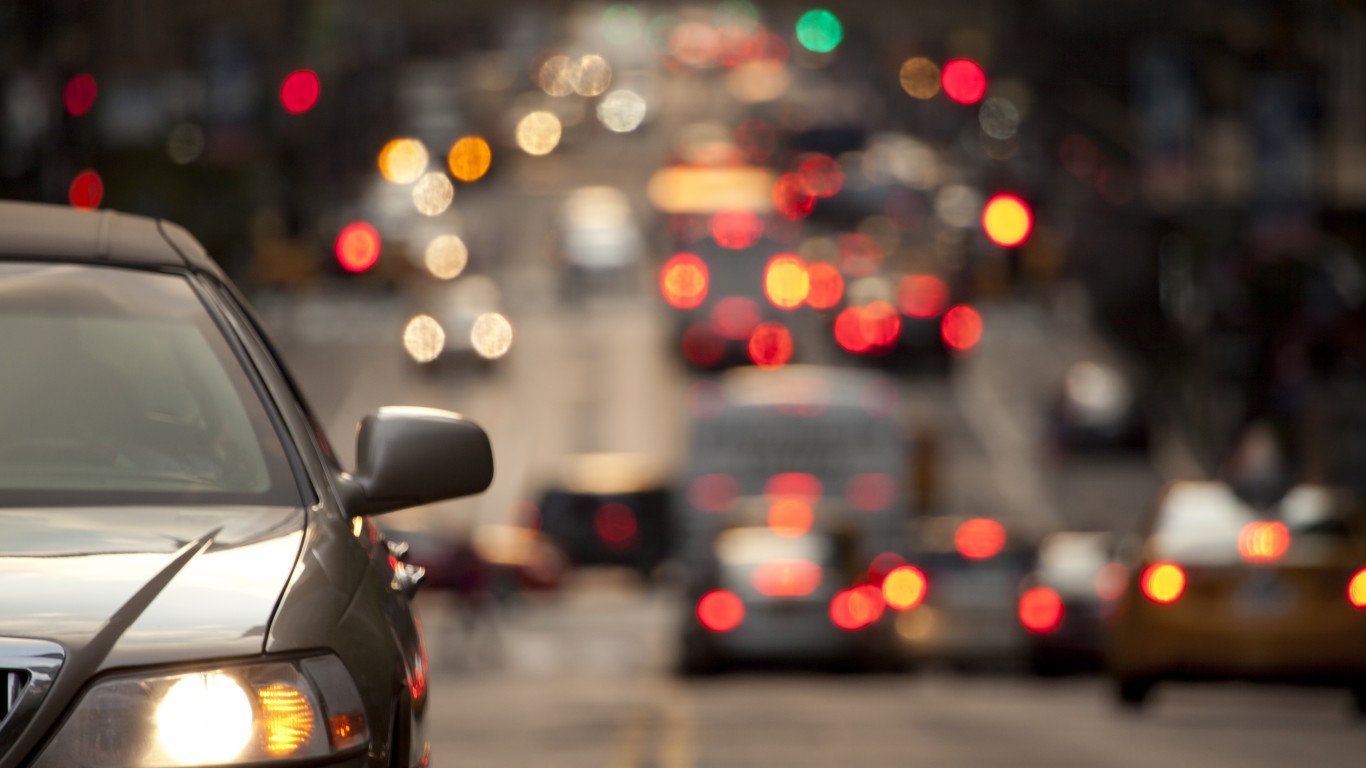Transportation
This Is the City Where People Have Super-Long Commutes

Published:

People spend what seem to be endless hours getting to and from work, especially in large cities. Roads systems, many built decades ago, no longer hold the growing number of cars that need to get in and out of major metro areas. The U.S. Census Bureau put the average time of a one-way commute at 27.6 minutes. Compare that round trip time to the roughly 16 hours most people are awake.
[in-text-ad]
Apartment List recently did a study on what it calls “super commuters.” These are people who commute more than 90 minutes each day to get to and from work. The data show that this is 4.6 million people, or 3.1 million people out of the American workforce. The study listed as among the reason people end up commuting for this long:
Nearly half of super commuters live within a 30 mile radius of their region’s commercial center, illustrating how this trend is symptomatic of excessive traffic congestion and lack of public transit options. Those who commute by public transit are five times more likely to be super commuters compared to those who drive.
From a policy basis, the study suggested that any national infrastructure investment must include putting public transit closer to the places from which people commute. This is easier said than done, based on the cost of building a transit system like the ones found in huge cities, such as New York. Even with this cost, the need for the investment becomes more obvious when the U.S. workforce is compared to the number of super commuters. While the workforce size rose 13% from 2010 to 2019, the number of super commuters was up by 45%.
Many of the cities with the highest percentage of super commuters compared to the total workforce were in California. The top city based on the ratio was Stockton, California, at 11.7% of the workforce. It was followed by Modesto, California, (9.6%); Poughkeepsie, New York, (8.5%); Bridgeport, Connecticut, (7.6%); and Riverside, California, (7.4%). Two other California cities — Santa Rosa (4.3%) and San Jose (3.8%) — also made the top 10 with the largest percentage of super commuters.
Click here to see which cities have the best and worst commutes.
Credit card companies are pulling out all the stops, with the issuers are offering insane travel rewards and perks.
We’re talking huge sign-up bonuses, points on every purchase, and benefits like lounge access, travel credits, and free hotel nights. For travelers, these rewards can add up to thousands of dollars in flights, upgrades, and luxury experiences every year.
It’s like getting paid to travel — and it’s available to qualified borrowers who know where to look.
We’ve rounded up some of the best travel credit cards on the market. Click here to see the list. Don’t miss these offers — they won’t be this good forever.
Thank you for reading! Have some feedback for us?
Contact the 24/7 Wall St. editorial team.